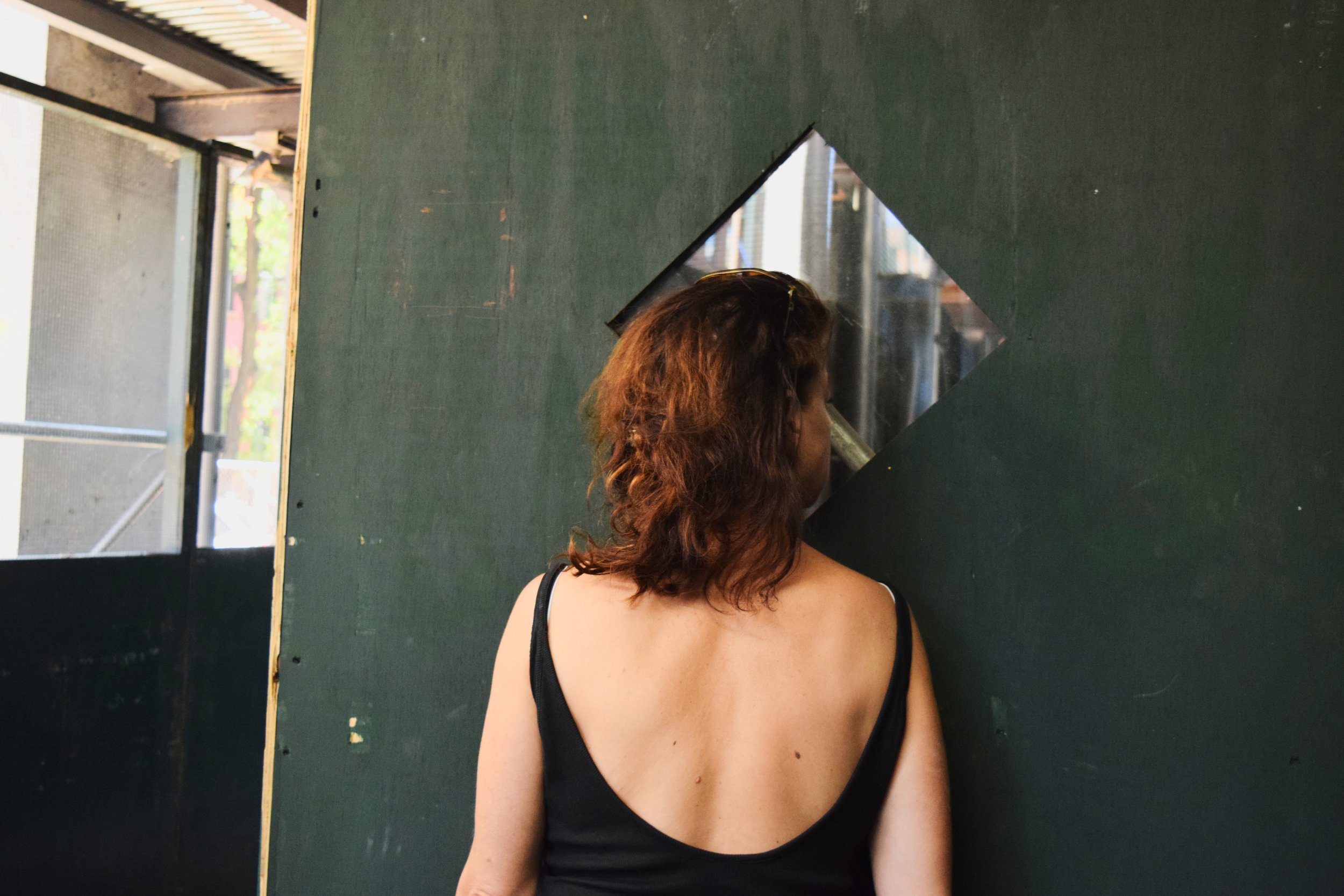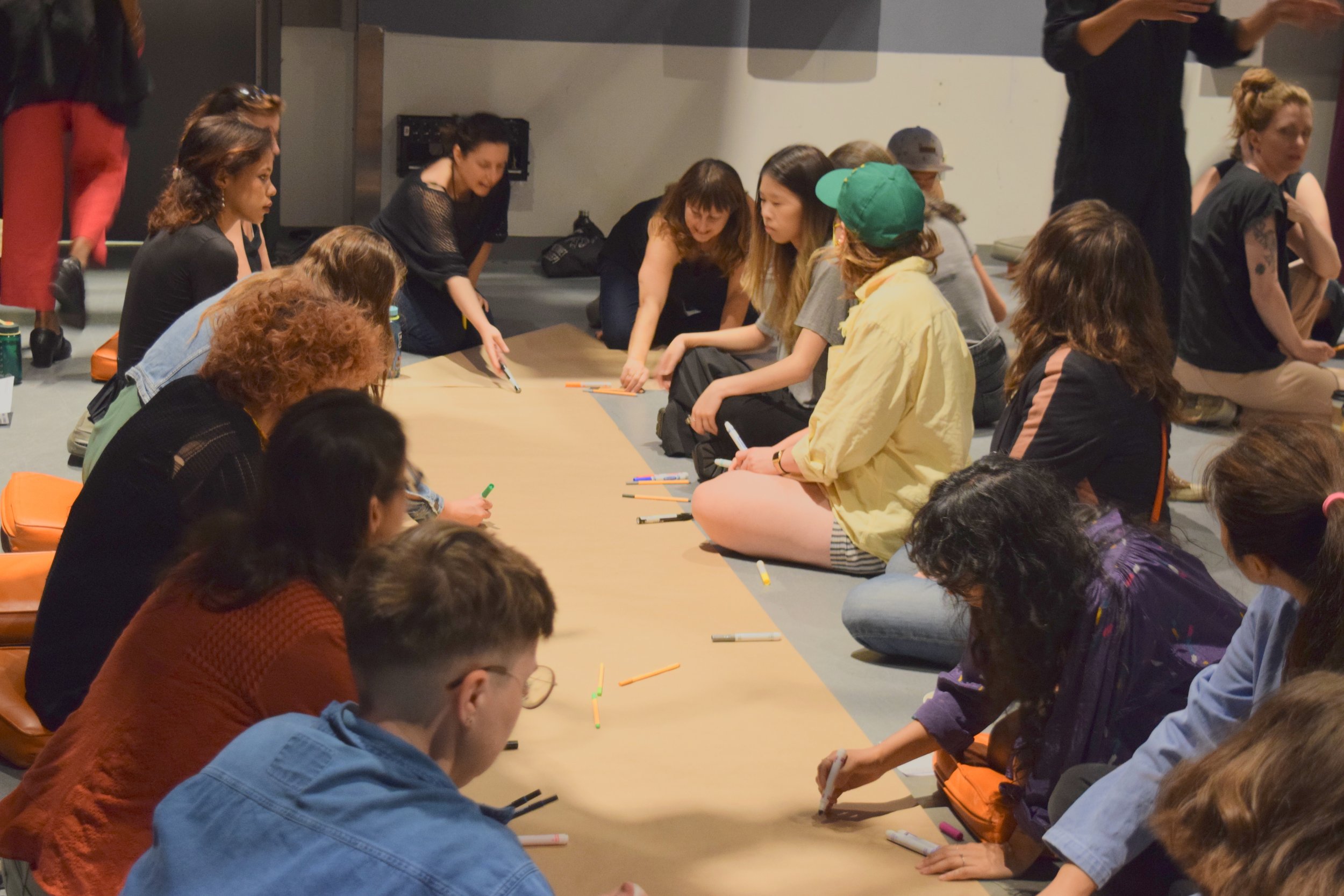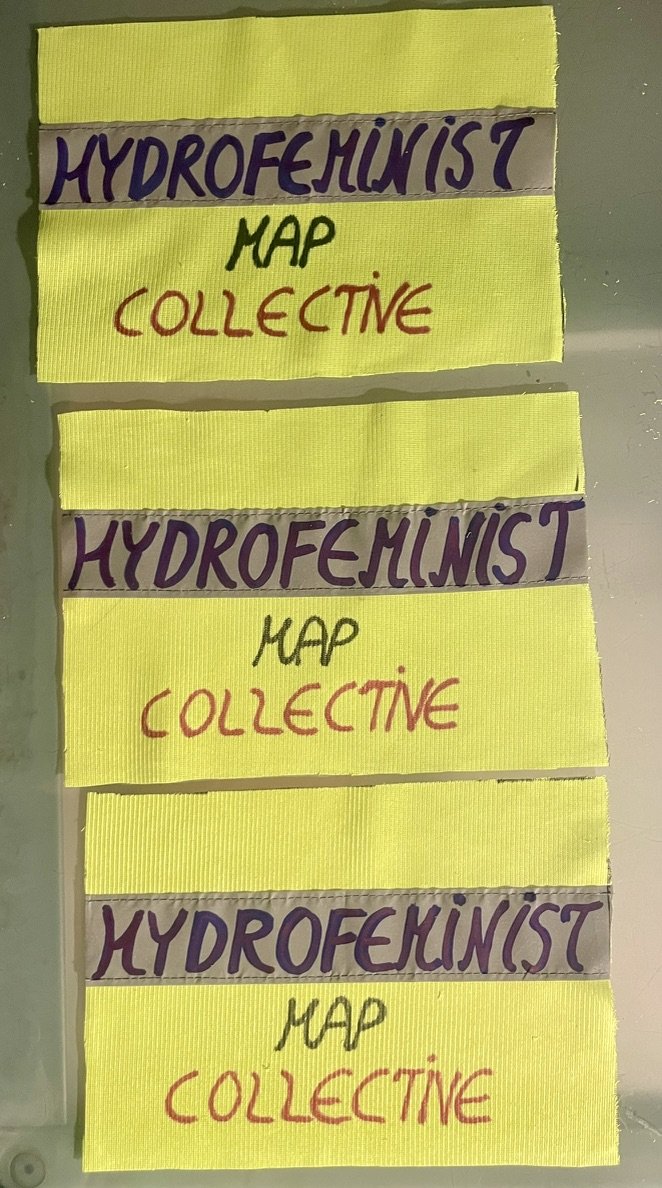"'Floods' is the word they use, but in fact it is not flooding; it is remembering. Remembering where it used to be. All water has a perfect memory and is forever trying to get back to where it was." - Toni MorrisonHydrofeminist Map Collective
Formed in September 2024 by Nora Almeida, Estefania Mompean Botias, andrea haenggi, and Jordan Packer, the Hydrofeminist Map Collective explores our relationships to our bodies, urban water, and each other. Through somatic and interventionist actions, we attune to our surroundings and cultivate an intentional relationship to the ecological and social dynamics of urban waterscapes.
The Hydrofeminist Map Collective investigates how artistic and somatic practices can reframe urban transformations as opportunities for relational attunement. By engaging with water’s memory and presence, the collective offers new ways to understand and intervene in urban spaces. Our work challenges impermeable barriers and static maps, envisioning cities as sites of collision and watery connection. As cities like New York confront rising seas and climate disruptions, the Hydrofeminist Map Collective emphasizes the importance of embracing fluidity, care, and relational ecologies.
Hydrofeminist Map Collective
Radiant Cold: Hydrofeminism by the Water's Edge
Winter 2025
This winter, we invite you to join the Hydrofeminist Map Collective and the East River tidal estuary for Radiant Cold, an embodied collective practice. Beginning with the premise that we are all bodies of water, we will explore questions, memories, and sensations that surface when we gather together at the water’s edge in cold weather.
Radiant Cold will happen on consecutive Saturdays at 4pm at four places where it is possible to access the East River in NYC:
Valentino Pier, Red Hook, Saturday, March 1 at 4pm
Marsha P. Johnson State Park, Williamsburg, Saturday, March 8 at 4pm
Hallets Cove, Astoria, Saturday, March 15 at 4pm
Barretto Point Park, Hunts Point, Saturday, March 22 at 4pm
During our practice, we will use movement to embrace the cold as a method for feeling the disruptive potential of weather and the power of water to transform, destroy, and heal. Our practice will last for approximately one hour and involve standing, moving, and being outdoors in cold weather.
At the heart of this project is the concept of the sentinel body—a body attuned to its surroundings, sensing and transmitting subtle shifts in the environment. Through this awareness, we explore what it means to become with water, cultivating a deeper relationship to the ecological and social dynamics of urban waterscapes.
By inviting the public into this space of radical attention, we redefine it as a practice of embodied care, interconnection, and restoration, shaped by the quiet power of winter and the dynamic edge where land and water meet.
On April 26, we present Vernal Ghosts: a Hydrofeminist Map Collective practice as a culmination of Radiant Cold.
Spatial Intervention and Urban Transformation
October 2024
On October 19, 2024 the Hydrofeminist Map Collective organized a spatial intervention and urban transformation in Gowanus, Brooklyn. We invited the public to come pay attention to and temporarily transform part of the radically human-altered landscape of Gowanus, a former tidal marsh and current site of redevelopment. Together, we created an ephemeral map with our bodies as we explored and interacted with the environment, enacting a collective intervention guided by interspecies disruption and the memory of water in Gowanus.
Graphics by Estefania Mompean Botias and Nora Almeida.
Photos by Chris Jordan.





















Embodied Mapping and Urban Transformation
September 2024
The Hydrofeminist Map Collective led an Embodied Mapping and Urban Transformation workshop on September 22, 2024 at BRIC in downtown Brooklyn in collaboration with Social Practice CUNY. The event was a plenary session at the 2024 Creative Time Summit exploring States of Emergence.
This workshop used somatic counter-mapping as a tool to pay attention to and temporarily transform urban spaces and our perceptions of them. For the first segment of the workshop, we collectively created an ephemeral map with our bodies as we explored and interacted with the area immediately outside the conference, guided by a walking score. Then we reassembled to discuss and document speculative methods for capturing shifting and ephemeral urban landscapes and experiences.
Photos by Aiesha Bennett.















